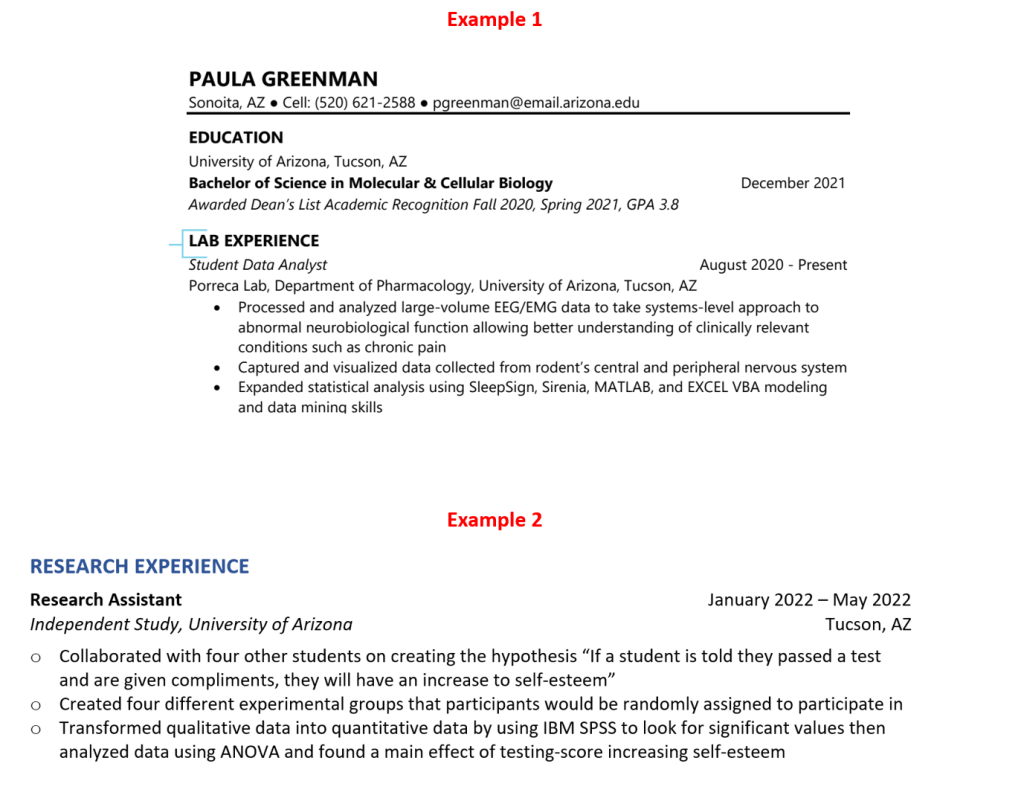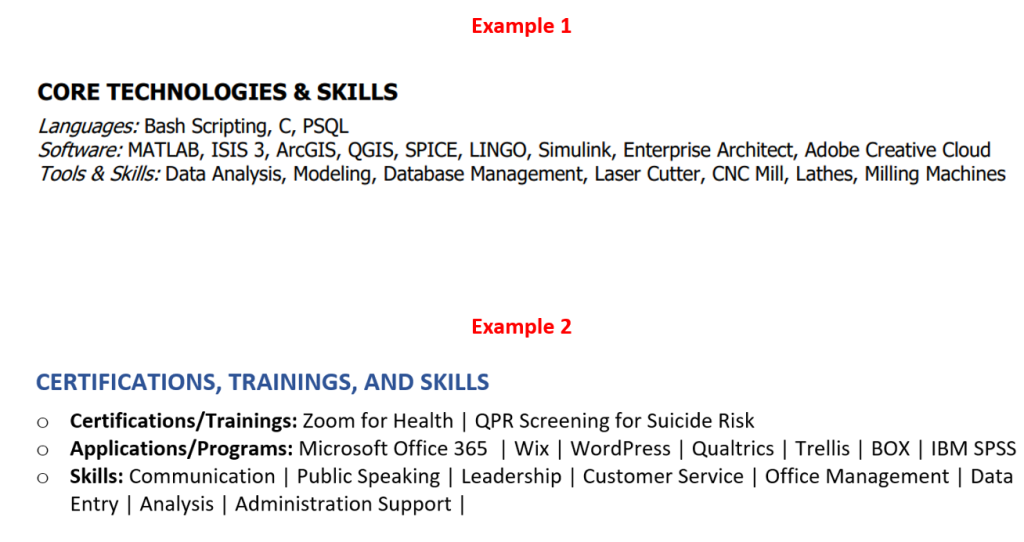Getting involved in research is a unique experience that can help you build important skill for school and beyond! Once you get started, it’s important to think about adding it to your resume. When applying to future research positions, jobs, internships, and/or graduate school, it’s important to show off your experience. You will want to show that you have this kind of experience and also show off the skills that you have used/developed in your research position.
What You Need to Include
Its important to summarize the basic details of each position on your resume so that whoever reads it understands what each position was before they even read your bullet points.
Your research experience should have;
• Your Role/Title
Example: Research Assistant, Student Lab Member, etc.
• Lab and University Name
Example: Wildcat Lab, University of Arizona
• City/State, not the full address!
Example: Tucson, AZ
• Start Month/Year – End Month/Year.
Examples: February 2023 – Present | January 2022 – May 2022
Putting it all together!
Research Assistant | Tucson, AZ
Wildcat Lab, University of Arizona | February 2023 – Present
Next – Writing About Your Experiences
Writing about your experience is important because this is the part that shows off what you did in your research experience! It’s important to write in a way that shows off the skills you used in the role. This is why we recommend writing in a style called APR format.
APR stands for Action – Project/Problem – Results. This format gives the employer, or whoever is reading your resume, enough information to see what you did, which skills you used, and why or how the task was completed. You can review more about APR format on the Resume Section on our website.
When preparing to write this section, think about what you did in your research position. What did you do? Why were you doing it? What skills did you use? Why or How was it completed? These are some questions to think about why writing about your experience. Then, use bullet points to list specific roles, tasks, or accomplishments.
Example Bullet Points:
• Code participants answers in Excel to ensure data is HIPAA compliance
• Analyze data using IBM SPSS to create correlation models and to find significant numbers
• Present at weekly meetings to share findings with research team members
In these examples, you can see each bullet point includes skills such as coding, analyzing, programming (IBM SPSS), and communication.
Putting It On The Page
Once you have finished your bullet points, you can add them to your resume! Students typically put their research experience in a section that allows these activities to stand out. If you feel like your research is something that you want to highlight, you can create a specific section for it!
Give it a unique header such as Lab Experience, Research Experience, etc. and you’re ready to go!
Example Resumes with Research

Adding Your Research Skills
Remember, you can also add your research skills to your skills section, if you have one! This is a good place to directly state the skills you used in your research experience. It’s important to state your technical skills, such as programming, equipment, etc. and transferrable skills such as communication, data analysis, etc.
Example Skills Sections

Resume Help
Get more resume information, templates, and more on our website or make an appointment with a Career Peer Coach, who can help you create a new resume or review your current one!

